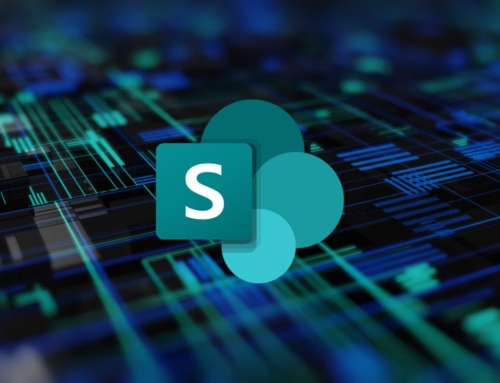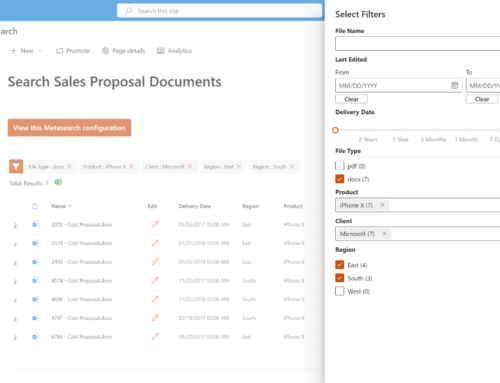With COVID-19 impacting lives, businesses and countries around the world, we at Compass365 are working together with our clients, partners, and Microsoft to continue to deliver the high level of service, quality, and guidance we bring to every project. With most companies adopting a “work from home” policy, we are seeing an increase in the use of SharePoint, Microsoft Teams, and the entire Office 365 platform.
A compass is one of the most important tools in any tool belt. We use the word compass in our name as a symbol of how we do business – our leadership helps companies navigate projects through strong direction and guidance. We love being our clients’ magnetic north guide, and we wrote this blog series to highlight the four key elements of a successful project that we utilize in every engagement. We are looking forward to the time when all of us can get back to the trails and to our offices. We are committed to providing support and ingenuity to our clients, helping you stay connected, productive, and moving forward during any sort of weather.
The Four Key Elements of a Successful Project
Imagine you’re hiking on a new trail. You are an experienced hiker and you have all the essentials. It was a beautiful day when you started, but two hours into your hike, a torrential rainstorm hits. Visibility is low, you have no rain gear, and your phone battery dies, so you cannot figure out how to get back to your car. You remember you have an actual old school compass. You dig it out, find your bearings, and carefully make your way back to the clearing where you started.
This story is of course a metaphor. Sometimes you find yourself well down a path before you realize you need a guide to reach your destination. Maybe you didn’t create a plan, maybe you didn’t think through enough options, or maybe you deliberately chose to go it alone without any help. No matter how you got there, no one likes being lost or off-course.
At Compass365 we believe project planning is crucial for every project’s success. Effective planning is in the details and does not exist in a vacuum. Pinning down those details can be difficult and overwhelming, which often leads to stalling or never getting out of the starting gate. Planning is crucial, whether you are enjoying nature or rolling out Office 365.
Experience has taught us that all successful projects share a similar set of processes or methodology for keeping on track and on budget.
For every project we deliver, we create a project plan detailing our four key elements of a successful project: Initiation and assessment, design, development, and deployment/review. We believe planning is essential to meet all milestones, goals, and metrics.
This blog series Finding Your Direction: The Four Key Elements of a Successful Project, will share our methodology, showing how we work with clients to continuously help them meet and exceed their project goals.
- Initiation and Assessment: This phase begins with a business case, outlining the objectives, purpose, and deliverables of the proposed project. Requirements are documented and key stakeholders are identified. We hold a kickoff meeting to introduce team members and make everyone aware of the schedule and their role and responsibilities.
- Design: In this phase we prepare and mockup the technical design of the project with wireframes, drawings, and decision trees. We hold design meetings to show stakeholders the different options available and the decisions that need to be made about the scope of the project.
- Development: In this phase we start developing the solution, installing software, building it out with planned configurations and most importantly, making sure stated requirements meet real word processes. We hold playback meetings where we review what is being built and validate with stakeholders. This phase is also where we prepare documentation, training materials, and test scripts, hold training sessions, ending with user/pilot testing of the solution. This phase ends when the stakeholders sign off and approve moving into deployment.
- Deployment and Review: In this phase we begin to deploy the actual solution for the client and continue to review and test the solution. We also continue to host training, in most cases train the trainer type sessions. We have a test and review process in this phase that leads to a sign off and approval by the key stakeholders.

Initiation and Assessment: How to map out a project
With any new project creating the map or plan is where we always start with our clients. The goals of this phase are to determine and lock down the problem that needs to be solved, who will be involved and what will be done to solve the problem.
Review the purpose and goals: Pinpointing the purpose of the project and a thorough review of what problems are being solved help uncover the myriad of reasons the business wants to make a change, upgrade, or migrate their systems. Clients may want to reduce annual costs, compliance and security risks by replacing an aging system, grow the capacity of the business to serve their customers by simplifying and automating processes, or improve employee retention by providing them with better communication and collaboration tools. Understanding all of the reasoning behind the project ensures the decision-making process and build out in later phases creates true value for the client.
Identify stakeholders: One of the initial goals is getting organized on both sides, working with our primary contact to share information and ensure people are aware of their roles. We identify business and technical stakeholders who will be affected by the project’s outcomes and contributing resources (time, tools, money, and people). These stakeholders will help in all phases of the project and sign-off on moving into the next phase.
Prepare the project plan: This presentation is created for our kick-off meeting and includes roles and responsibilities, project management tools, and the purpose and goals of the project. This is where we connect expectations, goals, and project management tasks for the team’s review.
Hold the kickoff meeting: with our project plan presentation to introduce team members, make everyone aware of the schedule, and their role and responsibilities. In this meeting we also look for disagreements about the scope, confirm the purpose of the project, look for scheduling constraints and confirm we have the right stakeholders engaged. We also look at how long to complete tasks and human and technical resources necessary on both sides to move through the phases. We encourage people to look for areas where issues may arise and what improvements could be made. Our customers know their businesses inside and out and we listen to them to adjust time frames and plans accordingly.
We review and discuss the following checklist to create our initial project plan:
- Confirm the overall purpose and goals of the projects
- Do we have all key stakeholders at the table?
- What is the preferred method for collaboration?
- What is the virtual meeting method we will use?
- What is the cadence for status reports and regular meetings?
- Who are the correct participants for each phase of the project?
- What other major events/launch/projects are happening in the organization?
Assessment:
Once we have completed our kick-off meeting, we move into the Assessment phase, where we gather the detailed requirements through stakeholder interviews and existing system analysis, update our project plan, and get ready for the design phase.
This phase is all about discovery, gathering business and technical requirements for the new system. As we have identified the stakeholders in different roles, we now schedule meetings to interview them. We often organize interview questions on five different threads:
- Data – define and document what data is to be part of the system
- Process – what will be supported, created, edited, approved, retained, automated, and deleted
- People – what are the roles – users, authors, editors, approvers, viewers, and administrators
- Interfaces – what is the current IT landscape? Are we going to create any integrations between new solutions and legacy software? What is available for the integration – existing APIs? Gather the documentation. Will existing systems be impacted by the implementation of the new system? We’ll need to plan for that.
- Technology – What other technologies are people using on a day to day basis and what is their experience level? Confirm the computing devices, operating system, web browsers, etc. Are people working primarily from the corporate office or remotely? Look for information about environment that will affect decisions later on.
After we finish our interviews, we complete a requirements document for key stakeholders to review and as a team decide priority levels: high priority, nice to have, future phase or never. We also ensure that all leadership approve the requirements as they are the foundation for the design phase and validating the new system is implemented successfully.
At this point we are complete with the elements of initiation and assessment.
Read the next article in this 4 part series The Four Key Elements of a Successful Project – Part 2, Design.









